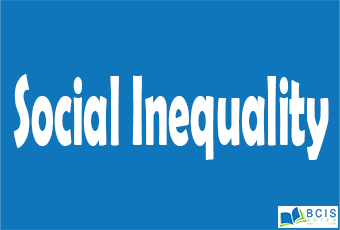
Social Inequality
Social Inequality occurs when there is an unequal distribution of resources in a given society. Social stratification implies social inequality; if some groups have access to more resources than others, the distribution of those resources is inherently unequal. Economic inequalities include the unequal division of income or wealth, Inequality refers to the condition in which people don’t have equal access to social rewards such as money, power, and prestige.
Also, norms of allocations can affect the distribution of rights and privileges, social power, access to public goods such as education, housing, transportation, financial services like banking, and other social goods and services.
For example; It is connected with racial inequality like white and black, gender inequality, and ethnic as well as other status characteristics high profile vs lower profile.
Concepts by Talcott Parsons and Karl Marx on social inequality and differentiation are as follows:
Talcott Parsons
According to Talcott Parson, Mainly there are three casual factors of Social Differentiation:
- Qualities
- Performance
- Possession
1. Qualities:
- It is the capacity or ability of people to undertake or, to do a task.
- It may be Physical Strength, Intelligence, Beauty, Courage, loyalty to a cause, sacrifice,
selfishness, and other internal qualities. - Thus, people have ranked accordingly.
2. Performance:
- It refers to the execution of a task in a given time under a given situation.
- 1st performances are always judged according to their result or products.
- 2nd they are judged according to the manner and style of the performing.
- When the norms are violated, performances are often dis-valued regardless of their result.
3. Possession:
- Mainly it refers to material possession such as money, wealth, property, and all other valuable material or objects.
- The unequal distribution of this material contributed to inequality and differentiation.
Karl Marx:
As he argues, the class is a hierarchical order on the basis of material he owns. Two divisions of society in the basis of materials:
- Bourgeoise
- Proletariat
Bourgeoise:
- They (landlords, industrialized ruling caste people) are controlling the means of production and occupy a high status in the society.
Proletariat:
- They (serfs, laborers, workers) are working-class people having less status in society.
There are two main ways to measure social inequality:
- Inequality of Conditions– unequal distribution of income, wealth, and material goods.
- Inequality of opportunities– unequal distribution of life chances across individuals. such as level of education, health status, the justice system, etc.
You may also like Social Control || The foundations of society || Bcis Notes

Leave a Reply